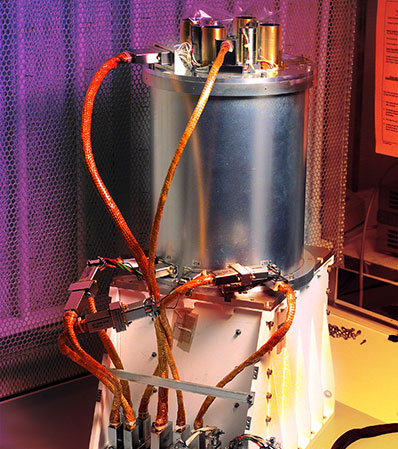
Deep Space Climate Observatory
Watching solar activity
The Deep Space Climate Observatory (DSCOVR) satellite mission, formerly known as Triana, is designed to monitor and warn of harmful solar activity that could potentially wreak havoc throughout Earth’s population and economy. Launch of the refrigerator-sized satellite on Feb. 11, 2015 from Cape Canaveral Air Force Station allowed the United States to extend its ability to provide accurate warnings of solar activity.
Without timely and accurate warnings, space weather events like geomagnetic storms caused by changes in solar wind have the potential to disrupt nearly every major public infrastructure system, including power grids, telecommunications, aviation and GPS.

What We Did
Instrument provider, star tracker & atitude sensor
Working with the National Institute of Standards and Technology (NIST) and the Scripps Institution of Oceanography, we developed the Scripps-NIST advanced radiometer, or NISTAR instrument. NISTAR uses radiometers to monitor Earth’s radiance nearly one million miles away with unprecedented accuracy and precision. The radiometer directly measures the radiant power and reflected solar energy from the entire Earth at once in three bands.
We performed instrument system engineering and designed, fabricated and tested the NISTAR payload. We also provided the CT633 star tracker and attitude sensor.
NOAA is managing the DSCOVR mission and funded NASA to refurbish the DSCOVR satellite and instruments. The U.S. Air Force funded and oversaw the launch aboard a SpaceX Falcon 9 rocket.
